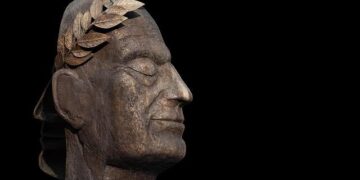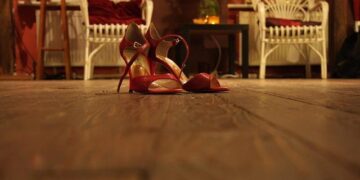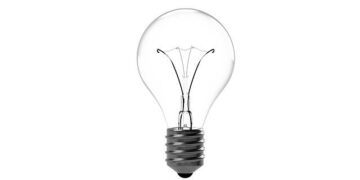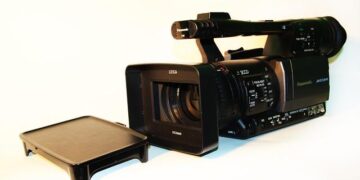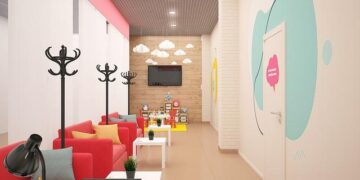By Bouba Diemé as told to Keri Wiginton
I started to get coughs and chest pain that seemed to come out of nowhere. Exercise got a lot harder. I was 26 and ran a fitness boot camp, so I was relatively fit. But one day, I couldn’t keep up with the group during a warm-up run.
That was 2012, when I found out that I have dilated cardiomyopathy. That means my heart is bigger than normal and doesn’t pump blood very well. That led to advanced congestive heart failure. Later on, my doctor told me my heart condition — left ventricular non-compaction cardiomyopathy (LVNC) — is congenital.
My diagnosis came as a shock. But my mindset shifted when I learned I was born with a heart problem. I hadn’t been living with heart disease for 3 years. I’d been living with it my whole life. That’s when I stopped fighting my condition and learned to embrace it.
Here’s how.
Finding My Calm
I needed to adjust to my medication, of course. But my first real challenge was mental. I was young. I had big plans and ideas. And my diagnosis felt like I was facing death.
Independence comes naturally to me, so I tried to regroup within myself. I’d go quiet when I got stressed or tired. I had to learn to share what was going on, which was a challenge. I was used to being the one who helped others. Sometimes I didn’t need anyone to do anything for me. But it was important that my family or others knew why I needed space or a break.
I also had to learn how to say no to myself. It’s OK to be in my head every now and then. But there was a time when I needed to force myself to get out of bed, to socialize, to make friends, and to be a part of the community. In time, I realized those things made me happier.
My two therapists have also been a big help. I see a social worker from the hospital, who’s taught me how to reframe life with a chronic illness. And I meet with a Black counselor, who’s helped me from a cultural standpoint.
I’m also Muslim, and I try to pray once a day. On top of that, I do a lot of guided meditations. I’ll do a session in the morning and before I go to sleep at night. I’ll take a moment in the middle of the day if I need to.
My goal is to keep my stress levels low, which is why I mediate often. But when I do get overwhelmed, the tools and habits I’ve learned — through therapy and meditation — come naturally. It’s almost a reflex.
A New Exercise Routine
Early on, I still wanted to do things like play soccer with my friends. But then I’d be tired for the rest of the day. One of my biggest symptoms was low energy, so this up and down wasn’t working. But I wanted to stay as physically fit as possible. And not just for my body. Exercise was, and still is, a good way to ease stress and decompress.
I learned to work out safely with a personal trainer. They taught me how to exercise in a more stable way. For example, I started to build muscle by doing more reps with light weights, instead of heavy lifting. In my case, this kind of approach helped. My energy started coming back.
Here’s what my physical activity looks like these days:
I exercise regularly. I try to do 30 to 60 minutes of strength training twice a week. And I aim for 8,000 to 10,000 steps a day. But I mix up my aerobic activity up, so I don’t get bored.
For cardio, I might:
Walk along the riverRide my bike in or outdoorsPace around my basementUse the treadmill in my house — my least favorite
I measure and track my activity. This helps me meet my goals and stay within my physical limits. I use a wearable fitness tracker. But you could use your phone.
I set realistic goals. When I was very sick, it didn’t make sense to walk 30 minutes a day. Instead, I’d walk up and down the stairs. Then I’d rest. I needed to give my body time to heal. As I got better, I added more activity — maybe I’d load the dishwasher and go up and down the stairs a few times.
I use my cardiac rehab lessons. I learned my safety zones. And one day, the physical therapist pointed out that I hold my breath when I do certain exercises. Those are the kinds of things I needed to be more mindful about, and coaching helped.
I do group activities. I challenge myself with martial arts. We meet twice a week. The class helps me understand my stamina and helps my flexibility.
Nutrition Changes
I never drank alcohol or smoked. And I’m not big on juice, soda, or caffeine. But I wanted to be as healthy as possible. I reached out to a nutritionist to find the best way to approach my condition.
The first thing I learned was to go easy on the salt. Luckily, that wasn’t hard for me. I didn’t go for a low-salt diet, but I stopped adding extra sodium to my food. And I tried to minimize how much I ate out.
Now, I get medical meals delivered weekly. I also keep other essentials stocked. That includes lots of fruits and vegetables, along with eggs, oatmeal or muesli, or heart-healthy ingredients for a sandwich. And I don’t skip meals because I don’t want to get too hungry. For starters, that’s when you can’t think clearly. But that’s also when you end up eating whatever you can find.
How much water I drink is also important. I measure it out. Everyone is different, but my limit is about 84 ounces a day. During hot days, my health care team says I should drink more. I might go up to about 105 ounces a day.
I stick with my healthy diet as much as possible, and I avoid added sugar or salt most of the time. That leaves me with some space for the less healthy stuff — fast food, chocolate, cake — and I don’t worry too much when I splurge.
Going Forward
There was a time when I wasn’t sure what caused my heart problems. I felt guilty that maybe I’d done something wrong. But my heart muscle never really formed the right way. It’s not possible for me to get physically better. I’m still on the list for a heart transplant. But right now, I’m living with a left ventricular assist device (LVAD).
Along with my LVAD, my lifestyle changes have boosted my energy and mood. When I feel good — mentally, physically, and spiritually — I can keep up with my kids and be a better husband and brother.
I also have bi-weekly calls with people in the heart disease community. We talk about what it’s like to personally live with a heart condition or to have family members or friends who do. Sometimes there are tears. But there’s also laughter and even singing. Those moments remind us that we’re more than patients. We’re here to help each other heal.
Photo Credit: Rowan Jordan / Getty Images
SOURCE:
Bouba Diemé, Heart of a Giant.
>>> Read full article>>>
Copyright for syndicated content belongs to the linked Source : WebMD – https://www.webmd.com/heart-disease/heart-failure/features/lifestyle-heart-failure?src=RSS_PUBLIC




